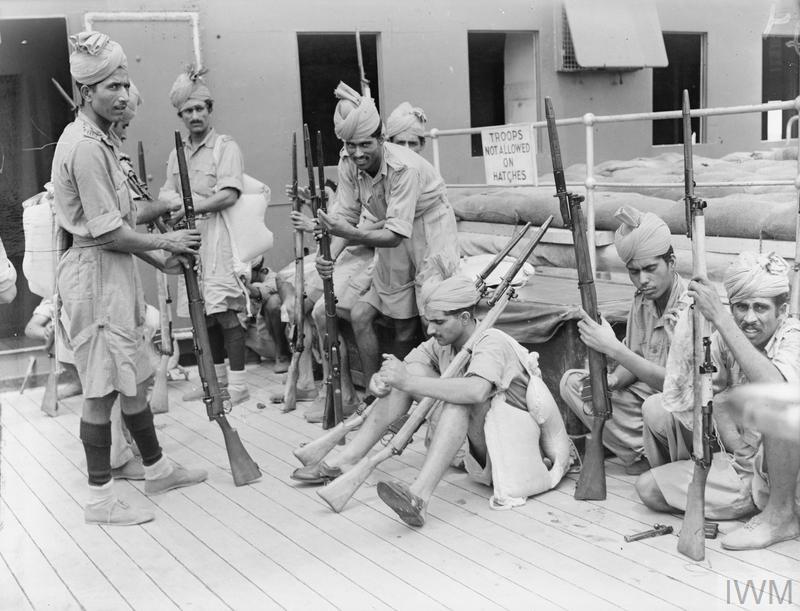Reviewed by Chris Smith
This book, the second volume of Daniel Todman’s mammoth history of Britain’s Second World War, picks up where the previous volume left off in 1941. Unlike the majority of histories of Britain’s conflict, which tend to focus on only one aspect of the war, Todman’s work aims to be completist – or rather as completist as any single history (even in two volumes) of Britain and the Second World War can hope to be.
The book traces Britain’s military, economic, political and social history, from the end of 1941 to the immediate post-war years, concluding in 1947. Naturally, the books begins with a Britain beset with both hope (in the form of new a new military partner, the United States of America, following the Japanese bombing of Pearl Harbor on 7 December 1941) but also calamity, as British South Asian possessions, not least Singapore, were humiliatingly seized by the rampant Imperial Japanese Army. The book concludes, as the title suggests, following not merely the formal surrender of Japan on 2 September 1945, but with the establishment of a new Labour government and its efforts to reshape post-war Britain. These efforts, Todman informs readers, ‘determined the creation of a new Britain’, one which ‘was different from the country of the 1930s’ (p. 777).
Todman’s book is interestingly structured. The chapters, some 29 of them in all, are broadly chronological, some focussed on specific periods while others are more thematic. These chapters are divided into shorter sub-chapters, each in turn dealing with one specific aspect of Britain’s war effort. The logic of this decision is clear: it is to ensure the reader is drawn through the war, in significant detail, but never overwhelmed – a tricky business even when writing shorter books. In this structuring strategy, Todman has been remarkably successful. For example, readers are briskly walked through the drama of Operation Torch (the Allied invasion of French North Africa) and the strategic decision regarding what to do next, before then enjoying a retelling of the high political drama of post-war planning and the 1942 Beveridge Report. This success is aided by a lucid and elegant writing style, which carries the reader along even through potentially difficult chapters loaded with statistical and technical detail.
That said, the sheer scale of the exercise inevitably yields some unwieldy sections. For instance, the opening chapter flits between discussion of the BBC’s coverage of Christmas, Christian broadcasting, to its reporting of Stalin and the Soviet Union, then to Music While You Work (a programme of light music, designed to be played in factories to improve workers efficiency), and then to political criticism of the BBC. Here Todman’s usually lucid flow has a certain staccato effect, which this reviewer found slightly jarring. Meanwhile, the very final chapter of the book, examining post-war Britain, covers both 1946 and 1947 in mere 54 pages. By contrast, the period from 1937 to the outbreak of Britain’s war on 3 September 1939 occupies ten whole chapters in the previous volume. That all said, these kinds of criticisms are to quibble.
It is important to note that the experiences, hardships and successes of ordinary people are not lost in Todman’s story. The sub-chapters, and indeed some full chapters, which deal with the domestic war – the Home Front – draw heavily on Mass-Observation (a social survey project which ran from 1937 to the 1950s), to illustrate and detail the impact of the war on the British public. For instance, discussions of rationing, a potentially dry subject, are leavened with fascinating accounts from ordinary people. For instance, we learn that entrepreneurially-spirited spivs bought and sold coupons while others, with access to rare luxuries, illicitly traded sometimes ill-gotten wares. So far so familiar, but fascinating little touches from the Mass-Observation archive add colour to this story, not least the speculation that a dock worker smuggled Demerara sugar home from work in his boots (p. 402).
The brief for this review was to examine whether Daniel Todman has produced the ‘new Calder’ – a reference to Angus Calder’s seminal and myth-busting 1969 The People’s War 1939–1945. In some ways this is a slightly unfair comparison, the two books have very different objectives and were written in very different times. Calder’s book sought to dismantle myths of the Home Front, whether the British public really came together, class differences melting away in the face of the furnace of shared hardship. Todman’s two volumes, though dealing with some of the same questions and myths, are much more ambitious. The coverage here is much more extensive, both thematically and chronologically, and represents a vital contribution to the historiography of the Second World War. It is little exaggeration to suggest that these two volumes, along with Alan Allport’s recent Britain at Bay, the first of a similarly expansive two-volume history of Britain’s wartime experience, will be the go-to, standard texts for many years to come.
Britain’s War: A New World, 1942–1947 by Daniel Todman (London: Penguin, 2020; 953 pp.; £35.00).
Chris Smith is Lecturer in History at Coventry University and author of The Hidden History of Bletchley Park (2015) and The Last Cambridge Spy (2019).
Image Credit: In Convoy from Bombay to Singapore, February 1942. ©IWM A 9692, Licence: IWM Non-Commercial Licence.

